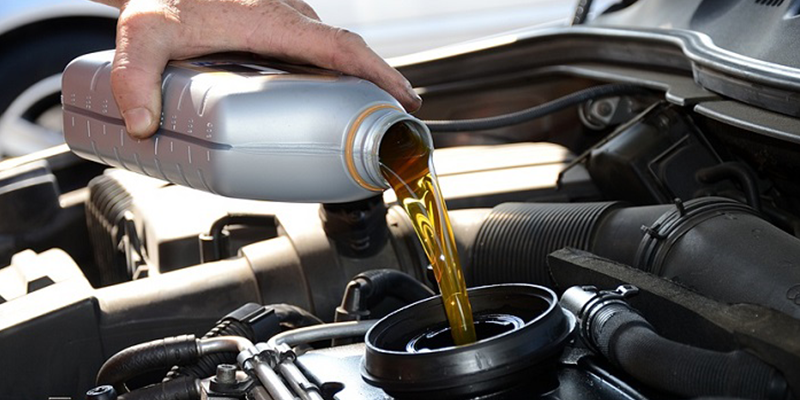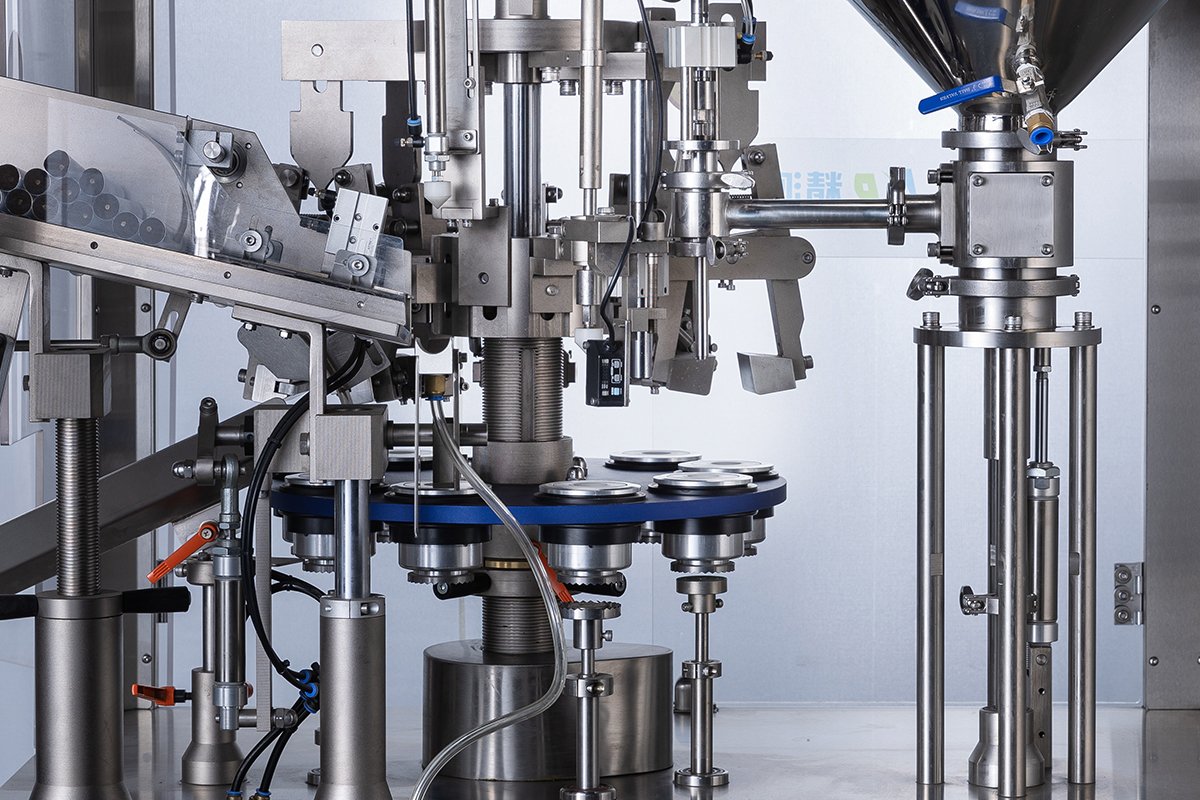What is a Motor Oil Filling Machine?
Motor oil filling machines play a crucial role in the automotive and manufacturing industries by ensuring precise and efficient filling of motor oil into containers. Their demand increases in manufacturing facilities due to the efficient and automated production. Understanding how these machines work, the types available, and key factors to consider when purchasing one can help businesses optimize their production processes and maintain product quality. This guide provides an in-depth look at the workings of motor oil filling machines, explores various types suited for different needs, and offers practical buying tips to help you make an informed decision.
Definition and purpose
A motor oil filling machine is an automated industrial device designed to precisely fill containers with motor oil or lubricant oil. Its primary purpose is to streamline and optimize the bottling process in automobile oil factories and distribution centers. People used to fill engine oil manually or semi-automatically. This caused inconsistent fill levels and slower production rates. It also increased the risk of spills or contamination.

Importance for automotive oil factories and distributors
The lubricant oil filling machine is important because it improves production efficiency, accuracy, and safety. These improvements matter in highly regulated and demand-driven environments. Automotive oil factories and distributors need these machines. They require high throughput, strict quality control, and compliance with environmental and safety standards. Manufacturers can automate repetitive filling tasks to get consistent volume fills. This reduces labor costs, ensures workplace safety, and improves product presentation. These benefits give them a strong advantage in the lubricant market.
How does automated filling improve efficiency, accuracy, and safety?
Automated motor oil filling machines use advanced control systems. They use precise volumetric or piston pumps to put exact amounts of oil into containers of different sizes and materials. Modern machines also integrate capping, labeling, and packaging functions, enabling a seamless production line that minimizes human intervention and error.
How Do Motor Oil Filling Machines Work?

Step-by-Step Workflow of a Motor Oil Filling Line
A typical lubricant oil filling line consists of these stages:
- Container feeding: Empty bottles or cans are loaded manually or automatically onto a conveyor system.
- Filling: The filling machine dispenses engine oil into each container using volumetric or piston filling technology, ensuring accurate dosage and minimizing spillage. All this is included in a PLC programmable control system and a weighing feedback system for quantitative filling.
- Capping: After filling, containers move to a screw capping machine station where caps are applied and tightened automatically to secure the liquid.
- Labeling: Next, containers are labeled with different label sizes with product information, batch codes, and compliance details through inline labeling machines.
- Packaging: Finally, filled and packed containers are grouped and boxed for shipment.
This workflow increases production speed. It keeps fill levels consistent across thousands of bottles. It also protects product quality by preventing contamination. The integration of filling and packaging operations also reduces manual labor and downtime.
Semi-Automatic vs Fully Automatic Machines
- Semi-Automatic Machines: Require some human intervention, such as manual loading of containers or capping. These semi-automatic lube oil filling machines are suitable for smaller packaging lines or facilities where product variety necessitates frequent size changes. They offer timed filling with moderate production capacity, typically in hundreds to low thousands of bottles per day.
- Fully Automatic Machines: This industrial machinery performs all filling line functions—from container feeding to packaging—without human assistance. They operate at high speeds and large volumes (thousands of bottles per hour), making them ideal for industrial-scale production. Fully automatic lines maximize operational efficiency but require higher upfront investment and more specialized maintenance.
Types of Motor Oil Filling Machines
- Semi-Automatic Filling Machines: Ideal for startups or small-scale operations, these machines combine automation in filling with manual positioning and capping, saving costs while improving accuracy over manual filling.
- Fully Automatic Filling Machines: These fill, cap, label, and convey with minimal human intervention. Often modular, they can be customized based on production needs, including the number of heads, container types, and throughput targets.
- Piston Fillers: Use a positive displacement piston to transfer a fixed volume of oil into containers. Known for high accuracy and suitable for viscous lubricants like motor oil or engine oil.

- Volumetric Fillers: Dispense oil based on precise volume measurement, often using flow meters or timed pumps, ensuring consistency for various container sizes.
- Linear Machines: Containers move linearly along a conveyor, stopping at filling and capping stations. Simple design with easy maintenance, suitable for medium-scale production.
- Rotary Machines: Containers move in a circular vane system to sequential filling and capping heads, supporting very high-speed operations in industrial settings.
These machines reduce human error much more than manual filling. They improve safety by minimizing spills. They also increase output without losing accuracy.
Motor Oil Filling Machine Construction and Components
Key components of a motor oil filling machine include:
- Filling Pump: Typically, piston-driven with hydraulic systems or peristaltic pumps are used in conjunction with stainless steel pump heads to accurately control the flow of oil.
- Nozzle: These filling nozzles are designed to minimize drips and splashing. They often feature an electronic flow sensor to cleanly cut off product flow.
- Conveyor: Stainless steel or other chemical-resistant materials conveying containers between stations.
- Capping System: An Automated capping machine is used to efficiently place and tighten caps.
- Control Panel: PLC control or HMI touchscreen interface for machine operation management, speed adjustment, temperature control, product changeover and error monitoring. This can also come with color touch-screen displays.
The materials used to build the system focus on chemical resistance and durability. Stainless steel SUS 304 (or grade 316) is common for parts in contact with motor oil to prevent corrosion. Chemical-resistant plastics and seals protect components from degradation caused by the lube oil.
Optional features include inline labeling systems. They also include automatic cap dispensers. The system designs are explosion-proof, allowing for the safe handling of flammable automotive oils. Modular multi-head setups can increase throughput.
Benefits of Using a Motor Oil Filling Machine
- Improved Filling Accuracy and Consistency: Highly precise volumetric or piston systems in the Production line ensure every container holds the exact filling range of oil, minimizing waste and meeting strict standards.
- Reduced Labor Cost and Human Error: Automation in these pneumatic systems cuts down manual handling, reducing mistakes and labor requirements, translating into cost savings.
- Increased Production Speed and Safety: Automated lines fill and cap hundreds to thousands of bottles per hour, reducing bottlenecks and improving occupational safety by limiting worker exposure to hazardous liquids.
- Versatility: These liquid filling machines accommodate a wide range of container sizes, shapes, and viscosities, enabling flexible production tailored to diverse product ranges. These include vegetable oil, gear oil, hydraulic oils, brake fluid, lip balm, candle wax, stick deodorant, and more.
What to Consider Before Buying a Motor Oil Filling Machine
- Production Capacity and Batch Size: Buyers should evaluate daily output goals. Semi-automatic machines fit small batches while fully automatic ones serve high-volume plants.
- Chemical Compatibility: Ensure machine materials resist chemical wear from motor oils and additives to safeguard longevity and hygiene.
- Budget and ROI: Determine upfront costs versus operational savings and increased production efficiency for a sound investment.
- After-sales Support and Maintenance: Reliable servicing, spare parts availability, and technical support are critical for sustained machine uptime.
- Compliance with Safety Standards: Machine design should comply with industry safety, hygiene, and environmental regulations.
- Energy Efficiency and Operational Safety: Modern energy-efficient technologies prioritize reduced power consumption and incorporate enhanced safety features, such as explosion-proof certification and fail-safe controls.
Maintenance and Troubleshooting Tips
Regular maintenance keeps the automatic engine oil filling machine working at its best.
- Cleaning and Calibration: Pumps and nozzles require frequent cleaning to prevent clogging and accidental damage. Calibration maintains filling accuracy.
- Inspections: Regularly check seals, gaskets, gear pump, and conveyors for wear or leakage.
- Common Issues: Minor issues can arise during the manufacturing process, such as leakage from the liquid feeding pump, inaccurate fill volumes resulting from pump wear, or container jams on conveyor belts. These issues should be addressed promptly.
- Preventive maintenance, including schedules and operator training, reduces downtime and extends the life of these liquid filling systems.
Conclusion
Motor oil filling machines are vital assets for automotive oil manufacturers and distributors aiming for precision, speed, and quality assurance in their operations. By automating the filling, screw capping, labeling, and packaging process, these machines deliver higher accuracy, reduce labor costs, and enhance workplace safety. Selecting the right lube oil filling machine depends on production needs, budget, and compliance factors, while proper maintenance ensures consistent performance. if you are thinking of an upgrade or establishing an oil bottling line, the King Pack filling machine is the one-stop solution for you. Our advanced motor oil fillers offer an excellent return through improved efficiency and quality control in a competitive market. So, why wait? Contact us now!




